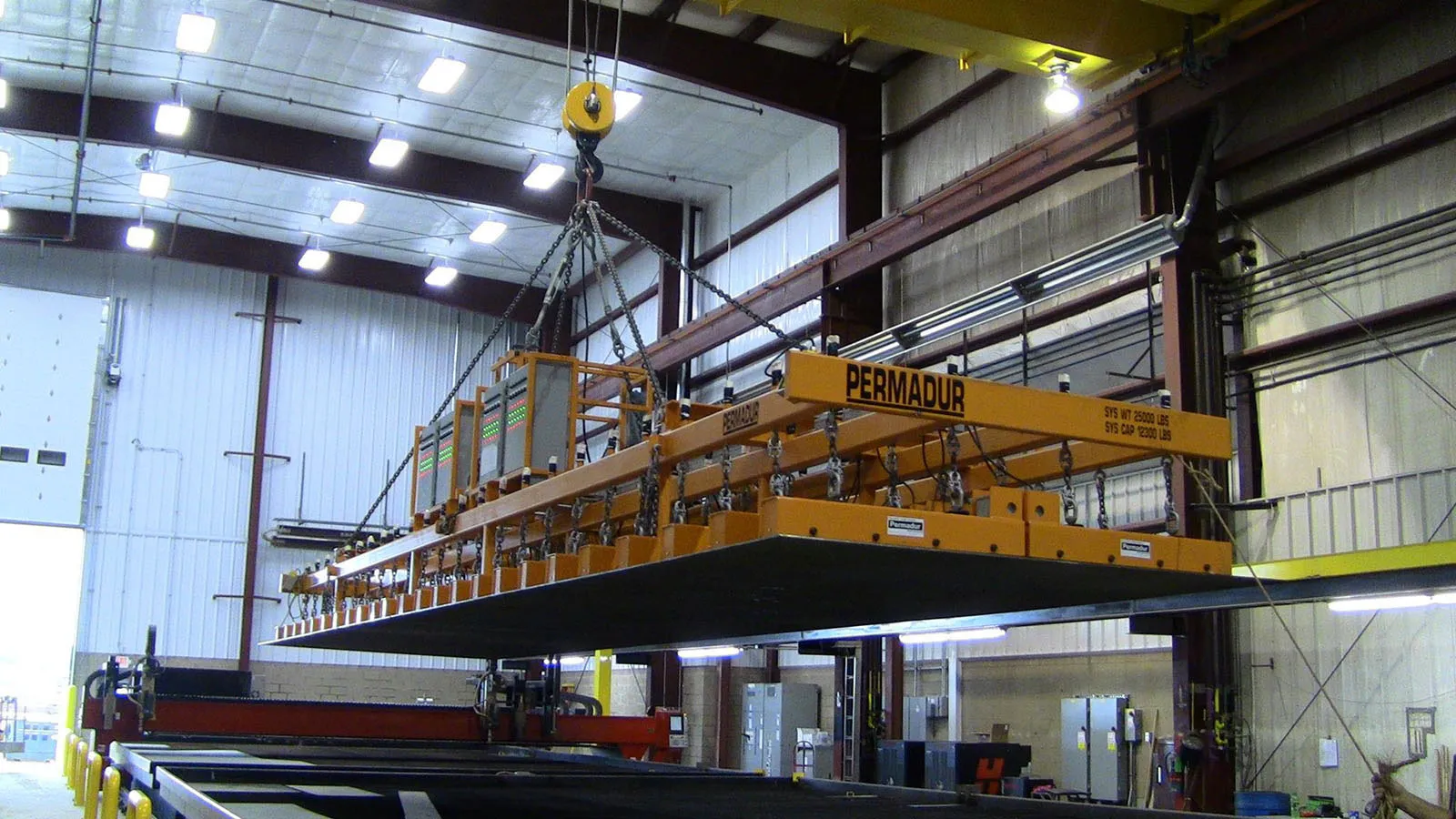When lifting thin metal plates, it's frustrating to see them bend or warp unexpectedly. Even minor bending can ruin expensive sheets of metal, waste valuable production time, and create headaches for your team. Traditional lifting methods and standard magnets often put uneven pressure on delicate metal, leaving you uncertain whether the next lift will end in damage.
Avoiding warping isn't just about protecting materials—it's about maintaining productivity and reducing rejects. Specialized plate lifting magnets spread lifting force evenly across thin surfaces, preventing warping before it starts. Using the right magnet design is the direct and practical solution to safely handling thin sheets without deformation.
Why Do Thin Plates Warp When Lifted?
Thin metal sheets lack internal strength, making them likely to sag or bend during lifts. This problem usually occurs because lifting force isn't spread evenly across the sheet. If the magnet only grabs a small area at the center or uneven spots along the plate, gravity pulls the edges downward. This uneven distribution of force quickly leads to warping or twisting.
Minor imperfections on the plate surface, like slight bends or rough edges, can also increase the risk. Even temperature changes and moisture can reduce the magnetic grip just enough to allow subtle shifts, creating noticeable bending when the plate is lifted. These small, overlooked details add up quickly when handling thin sheets.
It's clear that standard magnets or improvised lifting setups aren't reliable for thin sheets. To consistently prevent warping, you need magnets specifically designed to solve this issue.
How Do Plate Lifting Magnets Keep Thin Sheets Flat?
Specialized plate lifting magnets have specific designs to prevent bending and warping. They don't just lift metal—they hold it firmly and evenly, ensuring each plate stays flat from lift to placement.
- Magnets With Multiple Magnetic Poles: One important design feature is multiple magnetic poles spread across the magnet surface. This design distributes magnetic holding force over a broader area, reducing the stress that causes thin metal to bend. Instead of one strong pull in the center, these magnets support the entire sheet evenly.
- Spring-Loaded or Flexible Magnet Beams: Some magnet setups use spring-loaded or pivoting beams. This means the magnet can adjust automatically if the plate shifts slightly during the lift. Instead of forcing the metal to adapt to a rigid magnet, the magnet adapts to the metal, significantly lowering the chance of damage.
- Lightweight Magnet Bodies: Specialized plate magnets are often designed with lighter-weight bodies. Heavy magnets add unnecessary weight to thin plates, increasing stress and potential bending. Lighter magnets provide a secure grip without the risk of overloading thin, delicate sheets.
When chosen and used correctly, these specialized magnet designs practically eliminate the issues that cause warping. By spreading lifting force evenly and adapting flexibly to each plate's shape, you greatly reduce the risk of material damage. These specialized magnets are a simple but effective solution to a common frustration.
What Does OSHA and ASME Say About Lifting Thin Plates?
Safety guidelines from OSHA and industry standards from ASME clearly state that below-the-hook lifting devices must safely match the type and shape of materials handled. While OSHA regulations like 29 CFR 1910.179 require regular inspections and safe lifting conditions, ASME B30.20 specifically outlines that lifting devices need to fit the load's characteristics, including thickness and rigidity.
If a lifting magnet or device is incorrectly designed for thin plates, OSHA and ASME view this as a potential safety risk. Damaging or dropping plates is not only a productivity issue—it's a safety issue that could lead to citations or serious workplace hazards. Choosing the correct magnet is, therefore, critical to compliance.
Following these guidelines ensures your lifting practices are safe and effective. Using specialized magnets not only prevents material warping but also clearly aligns with OSHA and ASME safety expectations.
Practical Steps to Prevent Warping Immediately
To stop thin plates from warping during lifts, take these clear steps right away.
- Choose magnets rated specifically for thin materials, ensuring the load rating matches your plate size and weight.
- Inspect plates before lifting to remove dirt, moisture, or imperfections that reduce magnet grip.
- Always spread lifting points across the sheet using multiple magnets or beams with multiple poles.
- Lift plates slowly and evenly, avoiding quick movements or sudden jerks that create bending forces.
- Regularly check magnet surfaces and lifting beams for cleanliness and proper alignment to maintain an even hold.
Adopting these steps consistently will significantly reduce the chances of warping. You'll experience fewer rejected plates, smoother operations, and improved overall efficiency.
Make Warping Problems a Thing of the Past
Handling thin plates doesn't have to mean dealing with constant warping and frustration. Specialized plate lifting magnets give you a straightforward and practical solution, keeping plates secure and flat from start to finish. They align directly with OSHA safety requirements and industry best practices. If you're ready to eliminate bending, warping, and wasted materials, now is a good time to talk to an expert supplier and select magnets designed explicitly for thin sheet lifting.


